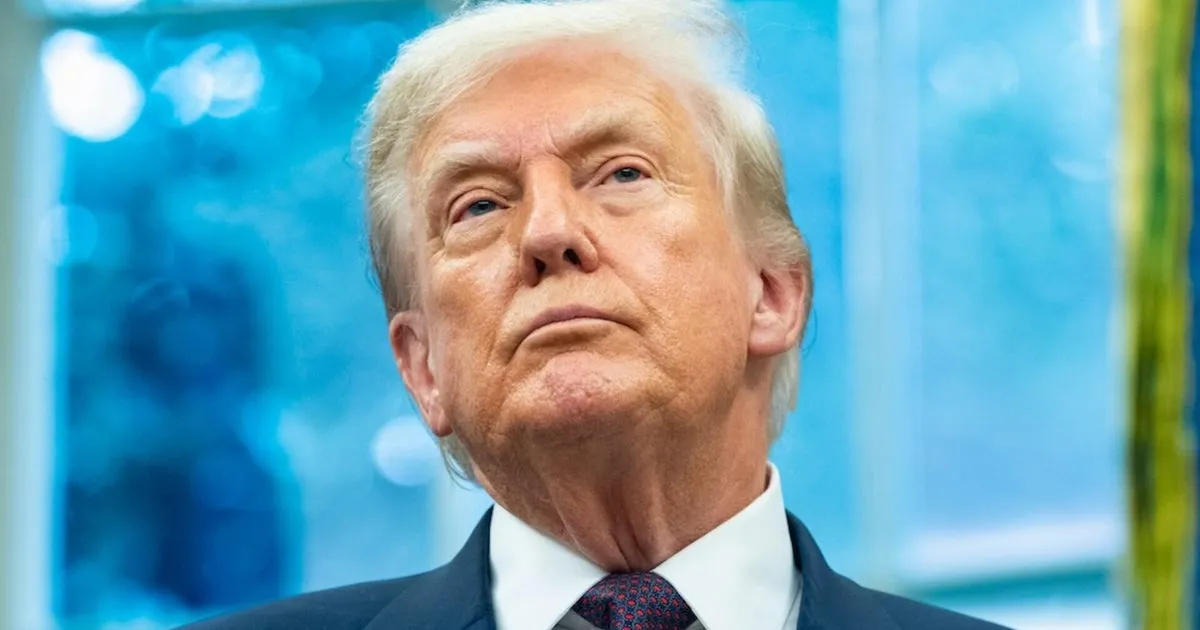
In a significant move aimed at reshaping the landscape of retirement savings, President Trump has announced his intention to democratize retirement by allowing 401(k) plans to invest in alternative assets. These investments include high-risk options such as private equity and cryptocurrencies, expanding the traditional investment choices available to American savers. The executive order, signed on Thursday, could potentially revolutionize the $5 trillion private equity industry, which has long sought access to the nation's retirement plans.
The executive order instructs the Labor Department and other federal agencies to redefine what constitutes a qualified asset within the framework of 401(k) retirement rules. Currently, retirement plans are governed by the Employee Retirement Income Security Act (ERISA) of 1974, which mandates that employers provide retirement options that prioritize the best interests of employees rather than Wall Street. Traditionally, American retirement plans have been heavily focused on stock and bond investments, with minimal inclusion of cash or highly traded commodities like gold.
As a result of this executive order, workers will still have the option to invest in traditional assets, but they will also have the opportunity to diversify their portfolios with alternative strategies. However, experts caution that the adoption of these investments may not be immediate.
While the exact timeline for these changes remains uncertain, experts predict that it may take several months, if not years, for the new regulations to come into effect. After the Labor Department releases its guidance, major retirement plan companies such as Fidelity and Vanguard will need to develop suitable funds for employers. Furthermore, employers will require additional time to update their retirement plan offerings, which means that investments in cryptocurrencies and private equity may not become mainstream options for individual retirement plans for some time.
While alternative investments like private equity and cryptocurrencies have shown strong performance and the potential for high returns, they also come with inherent risks. According to Simon Tang, head of U.S. operations at Accelex, these assets have matured into a viable asset class capable of delivering impressive long-term returns. However, it’s crucial to note that many alternative investments carry higher risk profiles compared to traditional asset classes.
One major concern is the lack of transparency regarding their daily performance. For example, private equity often invests in companies that are not publicly traded, making it challenging for investors to track their investments' status in real time. Unlike stocks, which provide instant pricing and daily performance updates, private markets operate in a much less standardized environment, characterized by fragmented documents and unstructured data.
When considering whether alternative investments can outperform traditional stocks and bonds, the evidence is mixed. In 2021, for instance, bitcoin surged by 135%, significantly outpacing the S&P 500, which rose by only 24%. However, in 2022, the tables turned, with bitcoin plummeting by 65% while the S&P 500 experienced a loss of 19%. Private equity investments, on the other hand, reported a 13.5% return over a decade, surpassing the 9.7% return for stocks and a mere 1.9% for bonds during the same period.
Despite the allure of high returns, it's essential to recognize that alternative investments often come with higher costs, including elevated fees for fund managers. These costs can significantly erode potential returns, given the complexities involved in acquiring and managing private companies.
President Trump's executive order to allow 401(k) plans to include alternative investments marks a potentially transformative moment for American retirement savings. While the possibility of diversifying into private equity and cryptocurrencies may appeal to some investors, it is vital to approach these options with caution, considering the associated risks, costs, and the current landscape of retirement planning.